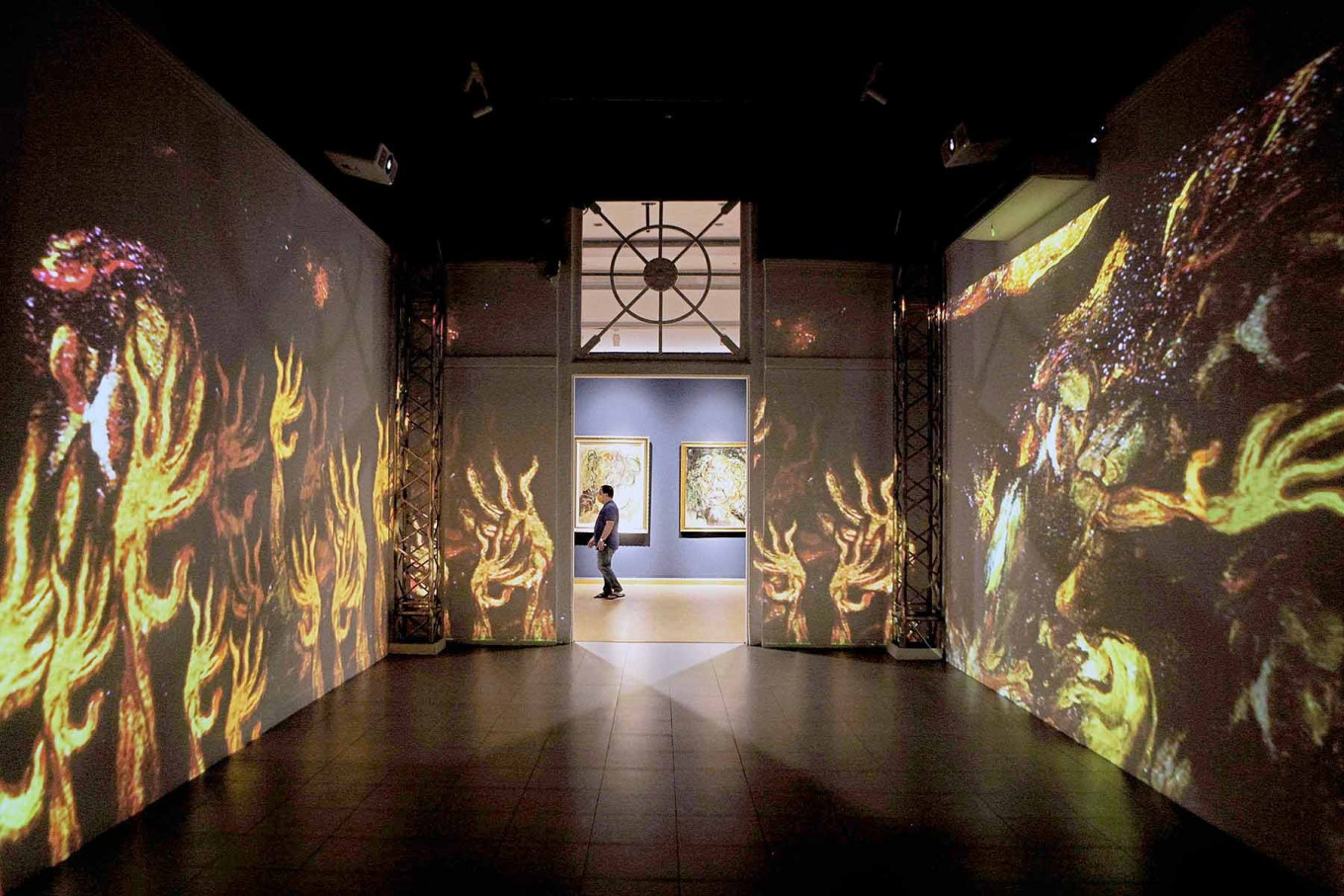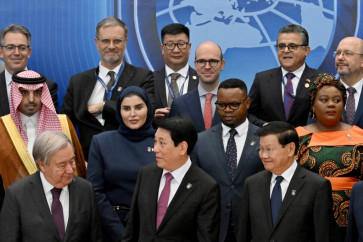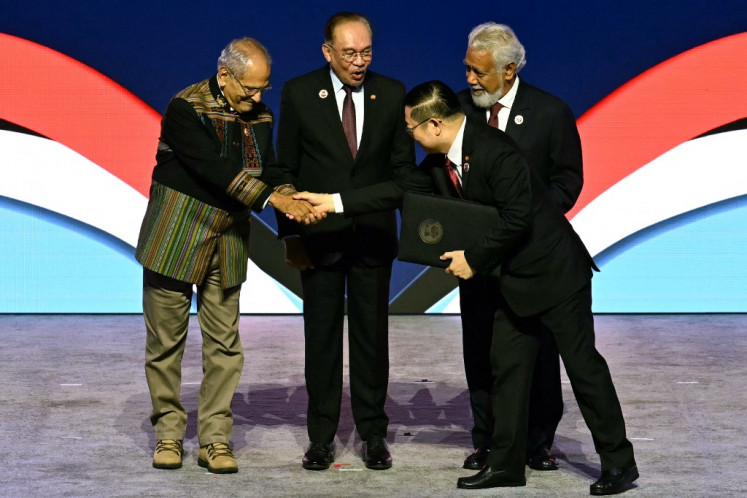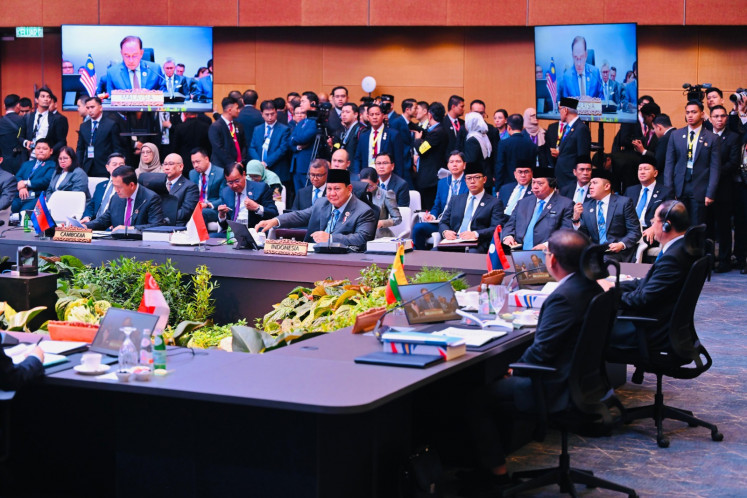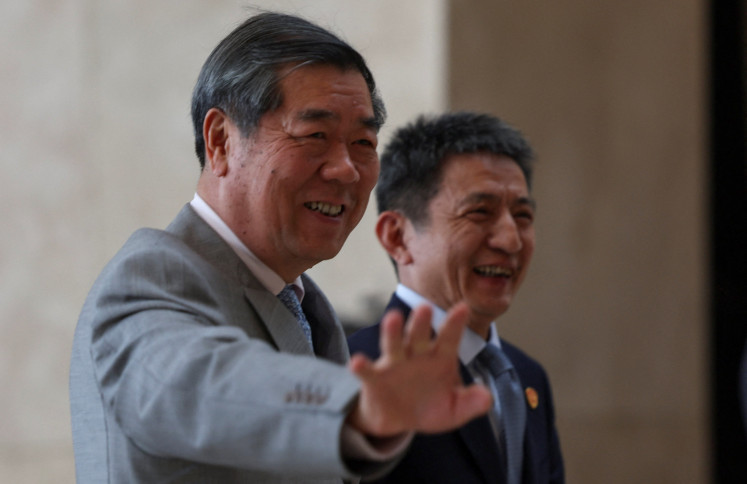Popular Reads
Top Results
Can't find what you're looking for?
View all search resultsPopular Reads
Top Results
Can't find what you're looking for?
View all search resultsIndonesian art events see value in Big Data as digitalization continues
Digitalization is an interesting field for exploration and has transformed into a new chapter in terms of presenting exhibitions.
Change text size
Gift Premium Articles
to Anyone
W
hen the Education and Culture Ministry and numerous researchers held the Education and Culture Communication Forum in October last year, their aim was to assess the socioeconomic state of creative industry players in the wake of the pandemic.
Totok Suprayitno, manager of the Institute of Research, Development and Books, said in his opening remarks that artists and creative industry players could choose three strategies to survive: opening up opportunity for digitalization, promoting collaboration to explore the potential of local creativity through certain activities, and changing their communication strategy. This message was very poignant, especially to the visual art community as part of the country’s creative industry.
It is interesting to note that the OPPO Art Jakarta exhibition was held not long after the forum had ended, featuring no fewer than 38 art galleries, 27 of them from Indonesia and the remaining from across the world. Around 800 works of art were digitally exhibited in two periods, from Oct. 19 to Dec. 15, 2020, and from Dec. 16, 2020 to Feb. 15, 2021. Virtual attendance reached 30,000, with transactions totaling billions of rupiah.
Held virtually, the OPPO Art Jakarta 2020 was the 12th edition of the event in as many years, demonstrating the consistency of the MRA Group as the organizer and its innovative ability. Many believe the event was among the largest art exhibitions in Southeast Asia, on par with ArtJog.
OPPO Art Jakarta went digital to maintain optimism that works of art remain meaningful despite the physical limitations. The event took advantage of digital technology and the internet to help creative minds maintain and strengthen their networks and to allow the public to continue to enjoy fine art, albeit in a different way.
“I heard this [event] is the first fully virtual art fair in Indonesia. This is, of course, a quick and swift step from fellow organizers and artists to move activities that were originally carried out outside of the network into the network. Innovation is crucial to ensure the survival of cultural activities," director general of culture Hilmar Farid said of the event.
The COVID-19 pandemic has certainly affected art industry stakeholders: artists, artisans, studio workers, galleries, exhibition services and event organizers. Arguably, this situation is uncharted territory, and understandably, there is no foolproof mechanism to catch up with the rapid changes. The switch from direct public viewing to digital platforms is one of the adaptation efforts. Digitalization is the best option for now, and many artists and industry players are willing to adapt to and develop new strategies to stay productive.
Digitalization is an interesting field for exploration and has transformed into a new chapter in terms of presenting exhibitions from the perspective of event management, especially with regard to venue transfer, human resource management, operational costs, transaction systems and the implementation of technology itself. As a result, this is an attractive business opportunity for providers of virtual exhibition services, while presenting a challenge to create an internet-based live experience.
Numerous fine art exhibitions have opened online across Indonesia, such as Manifesto VII “Pandemi” at the National Gallery in Jakarta, INTERAKSI virtual exhibition by Lampung artists, Pandemi Kita in Kediri, East Java, and Virtual Joint Painting Exhibition by pasarlukisan.com.
Several art communities, like Komunitas Gudskul and Serum Art Handling, have organized virtual exhibitions like Meretas Batas (Break the Limits), Dirumah Tak Berarti Melemah (At Home not Necessarily Weak) and Bless on the Mess; while Ciputra ArtPreneur presented exhibitions like Hidup Berdampingan dengan Musuh (Coexist with the Enemy) and the Jakarta Biennale. Aside from the virtual ones, there were several hybrid exhibitions that combined online and offline platforms, such as the Yogyakarta Culture Festival and ArtJog Resilience.
Aaron Seto, director of the Macan Museum, says the pandemic has made people realize the importance of digital platforms. Indeed, digitalization and disruption of the creative industry are the concern of the government, according to Deputy Tourism and Creative Economy Minister Angela Tanoesoedibjo.
Digitalization, the number of visitors and big data are three aspects that need to be optimized. To ensure integrated transaction patterns, fintech companies like LinkAja, Gopay and OVO should be involved in art exhibitions. OPPO Art Jakarta is a milestone for the digitalization of fine arts due to its potential big data approach. Identifying the big data in the event in terms of volume, velocity and variety will unlock more potential and improvement ahead of future events.
The management of big-data-based exhibitions is an interesting opportunity, which is very much in line with the message of Tourism and Creative Economy Minister Sandiaga Uno, who said Indonesia could compete with events like Art Basel and Art Central, which recorded 105,000 online visitors (Nikkei Asian Review).
Collaboration with companies in the marketplace, telecommunication, logistics and banking sectors should be taken into consideration, since they are known for their commitment to developing the country’s fine arts industry.
Collective awareness among all stakeholders matters to ensure the survival of art exhibitions, and the use of big data will widen their coverage and value. To quote Pablo Picasso, artists should never give up easily.
The Indonesian fine arts community must keep moving forward after all.
***
The writer is part-time lecturer for the Event Program at Prasetiya Mulya University.

